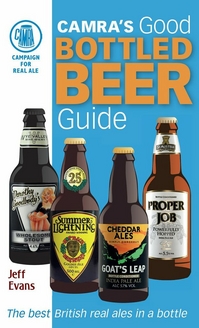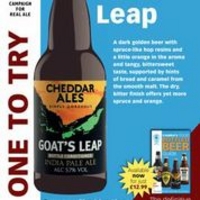Jeff Evans, the man with plenty of bottle
Added: Wednesday, May 29th 2013
Good Bottled Beer Guide, by Jeff Evans (CAMRA Books, £12.99)
This is more than a book, it’s a celebration. This is the eighth edition of the guide and Jeff Evans points out that when he compiled the first edition in 1998 there were just 180 bottle-conditioned beers produced in Britain. The new guide has a formidable total of 1,700.
When Jeff started to plough his lonely furrow, sales of bottled beer were falling off the cliff. Now they’re a vibrant and fast-growing sector of the drinks business. Almost single-handedly, he has saved, revived and boosted good bottled beer.
As this is a CAMRA publication, all the beers are “live”, meaning they contain yeast that will improve and age the beers listed. The campaign calls them “real ale in a bottle” but they are a quite different animal to cask beer, which has to be consumed in a few days once a container has been tapped as it will quickly oxidise. Bottle-conditioned beers, on the other hand, will not only age but will develop fascinating new characteristics over months and even years.
Miles Jenner of Harvey’s Brewery in Lewes, Sussex, says the Elizabethan Ale brewed in 1953 for the coronation of Elizabeth II “is still drinking well”. I was once given a bottle of Barclay’s Imperial Russian Stout brewed prior to the merger of Barclay Perkins and Courage in 1955. It was astonishing to think the beer was some 50 years of age. It was velvety smooth, packed with remarkable flavours of old libraries of leather books, bitter chocolate, molasses, burnt fruit and peppery hops. It was the apotheosis of beer.
Of course, not all beers are designed to be laid down for 50 years – neither are most wines, for that matter. All the beers listed in Jeff’s book can be drunk as soon as they have been bought but it’s always a mixture of fun and fascination to age some bottle-conditioned beers. The Ruby Anniversary Ale produced by the Chiltern Brewery last autumn to commemorate the 40th edition of the Good Beer Guide has changed character in its short life: I have one left in the cellar and will do my best to leave it for a year or two.
Jeff sensibly has a table suggesting how long a beer should be aged in bottle before it’s consumed: six months for beers up to 4.5%, one year for beers between 4.6 and 6% and 18 months to two years of beers above 6.1% -- with the caveat that very strong beers will continue to improve for more than two years.
He admits there has been a considerable improvement in filtered bottled beers in recent years but says “there is still a difference between this approach and beer that conditions in the bottle, because of the natural carbonation, the complexity and the delicacy of texture the latter brings, not to mention the fact that live yeast can keep a beer fresher for longer and help prevent staling reactions such as oxidation.”

The guide begins with a detailed description of how beer is brewed and the methods used for producing bottle-fermented beers: some brewers simply run fresh beer from conditioning vessels into bottles, while others prefer to filter out the original yeast – which can be tired after primary fermentation – and replace it with a dosage of a fresh culture. Once bottled, the beer needs a period of warm conditioning to allow natural carbonation to develop, followed by cool cellaring either in the brewery or the shelf in shop or supermarket. Fortunately most store-keepers now realise that keeping bottles under bright neon lights in a humid atmosphere is guaranteed to ruin good beer.
The main body of the book is broken down into beer styles, ranging from milds through bitters, IPAs, stouts and porters to speciality beers. Here is the evidence of just how much the bottled beer sector has changed since 1998, with a vast choice of IPAs, barley wines, stouts and wheat beers. There are even a dozen lagers, stressing that, as with Budweiser Budvar’s draught Yeast Beer, proper lagers don’t have to have their flavour stripped out by filtration and pasteurisation.
The speciality section includes beers made with such additions as lemon, ginger, orange peel, plums, port wine and oysters. This section proves the verve brewers are bringing to the modern beer scene and their determination to widen the pleasures of drinking.
There are a number of beers listed that are recreations of old beer styles and Jeff rightly singles out Fuller’s for their Vintage Ales and also the Past Masters series that has brought back genuine ales from the 19th century.
To help you along the way, the guide ends with a lengthy list of specialist beer shops and online suppliers. The Good Bottled Beer Guide is a small masterpiece that opens an Aladdin’s Cave of pleasure to all lovers of good beer.








